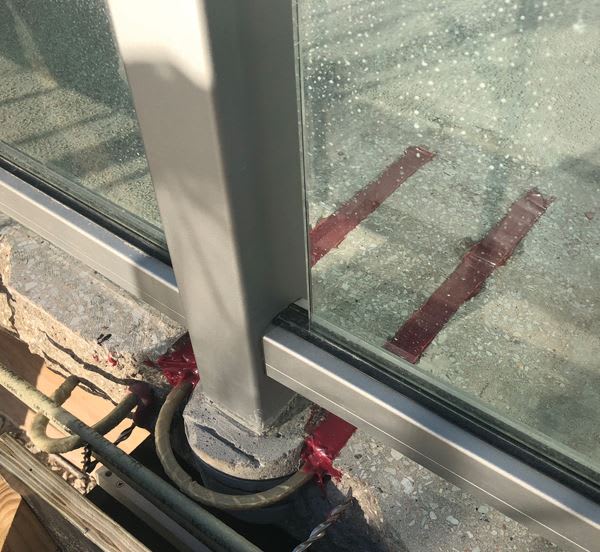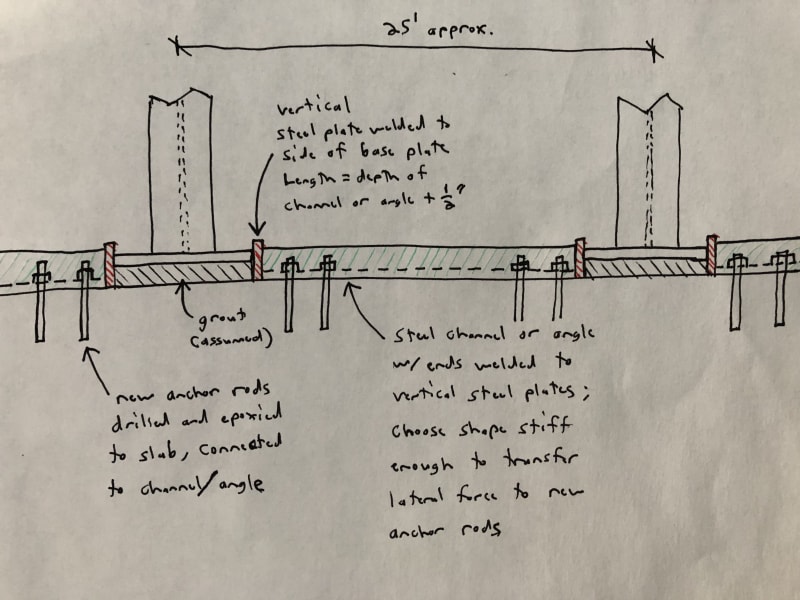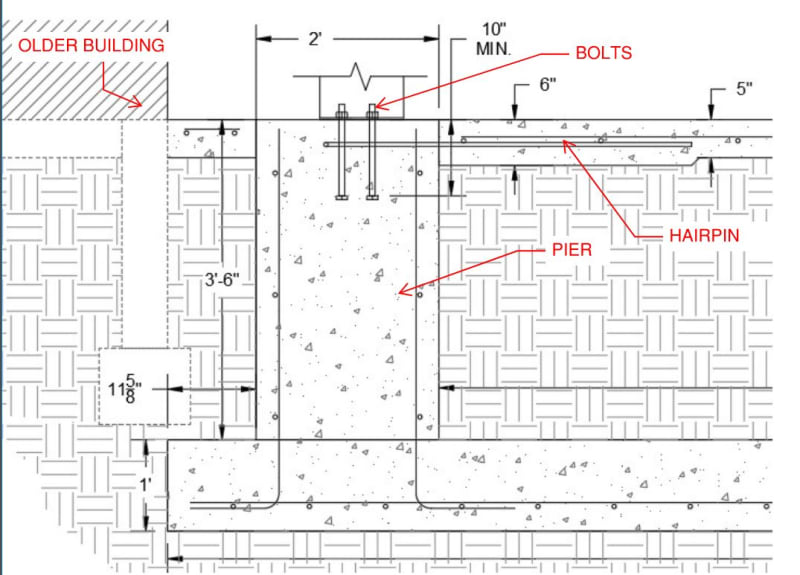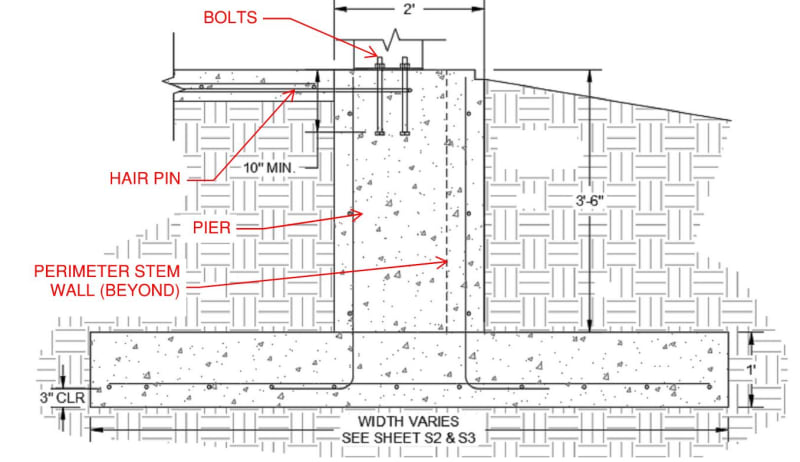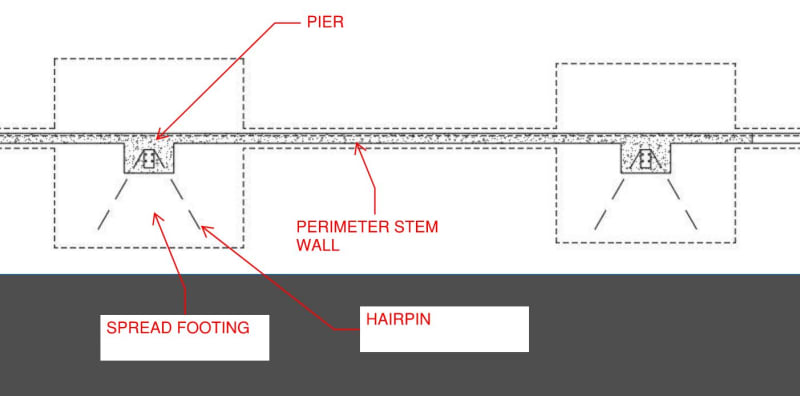Hi All, I'm looking from ideas/input on this issue. I'm on a project where the contractor forgot to place the rebar hairpins at the top of the concrete columns for a per-engineered steel building. The error wasn't discovered until months after the building was complete and photos of construction were being reviewed for record drawings. Per design, the hairpins were to prevent break out of the bolts. As it currently sits, the capacity of the bolt connection is under capacity by 4kips, breakout is the failure mode.
On one side of the building, the foundation was poured against another per-engineered steel building foundation so the top of the piers are restrained by the foundation/slab of the adjacent building. Would this potentially prevent bolt breakout as the concrete between the bolts and edge of pier is unable to move laterally due to the adjacent building?
On the opposite side, the piers are not restrained by an adjacent building. Could a steel plate/beam or whatever is needed to resist the breakout force be placed across the outside face of the concrete pier to restrain breakout failure? Does concrete breakout function linearly or would breakout occur and push up?
Thanks for your input.
On one side of the building, the foundation was poured against another per-engineered steel building foundation so the top of the piers are restrained by the foundation/slab of the adjacent building. Would this potentially prevent bolt breakout as the concrete between the bolts and edge of pier is unable to move laterally due to the adjacent building?
On the opposite side, the piers are not restrained by an adjacent building. Could a steel plate/beam or whatever is needed to resist the breakout force be placed across the outside face of the concrete pier to restrain breakout failure? Does concrete breakout function linearly or would breakout occur and push up?
Thanks for your input.

